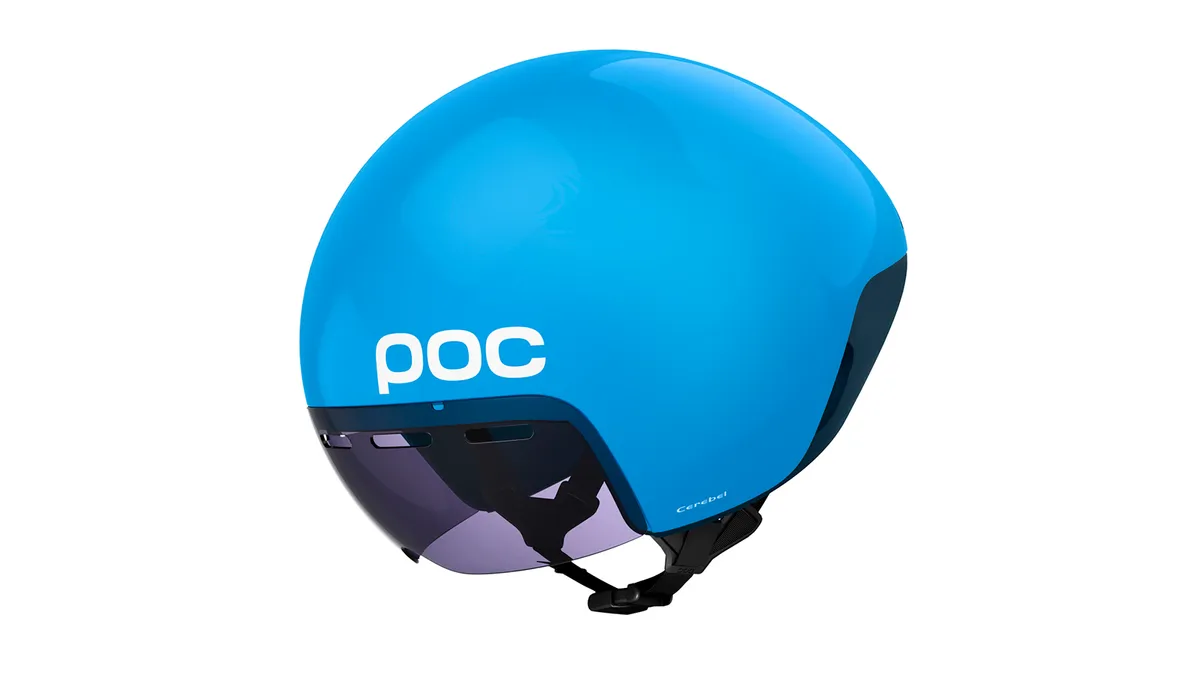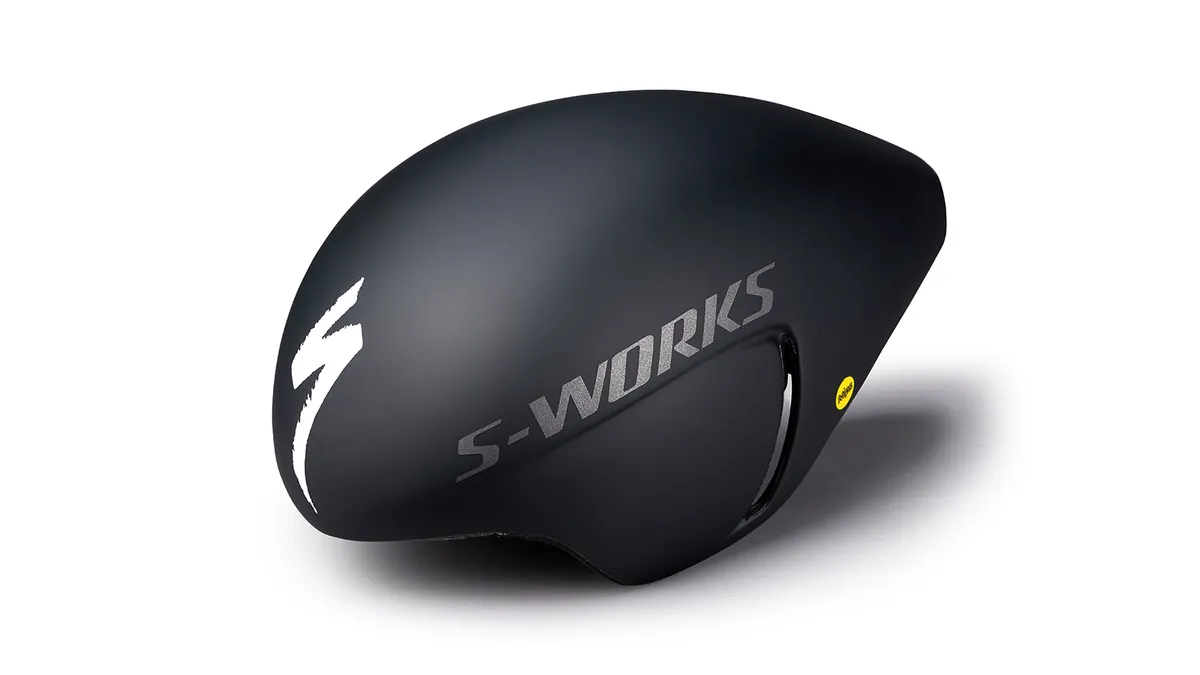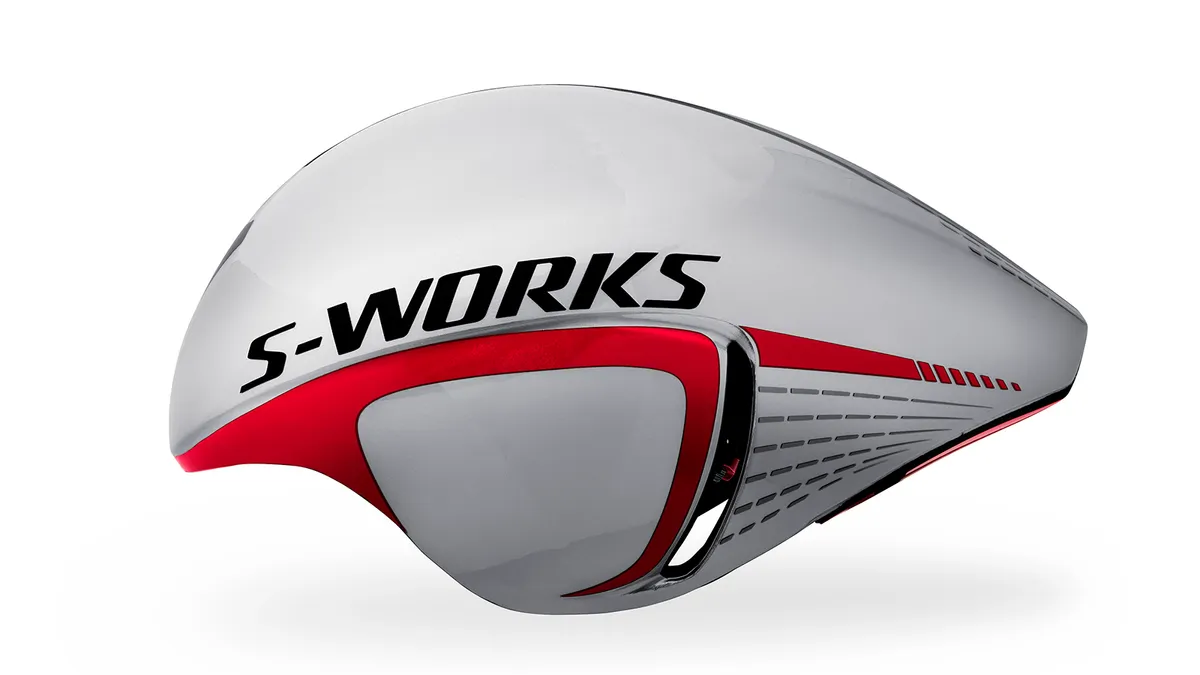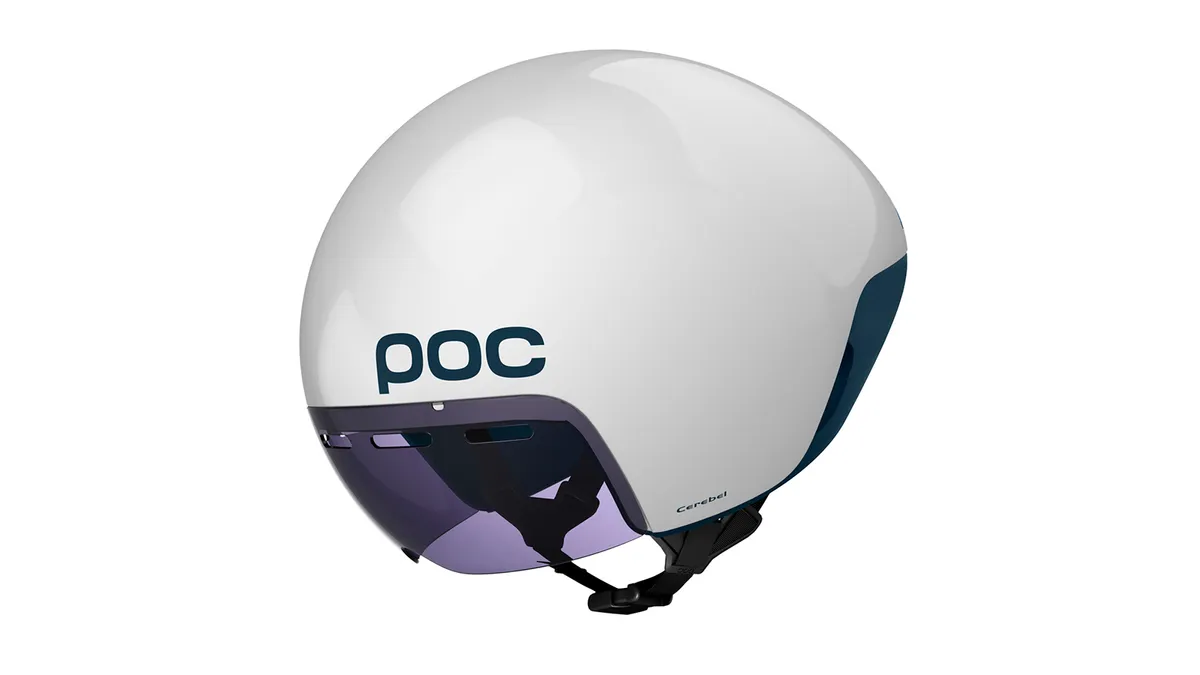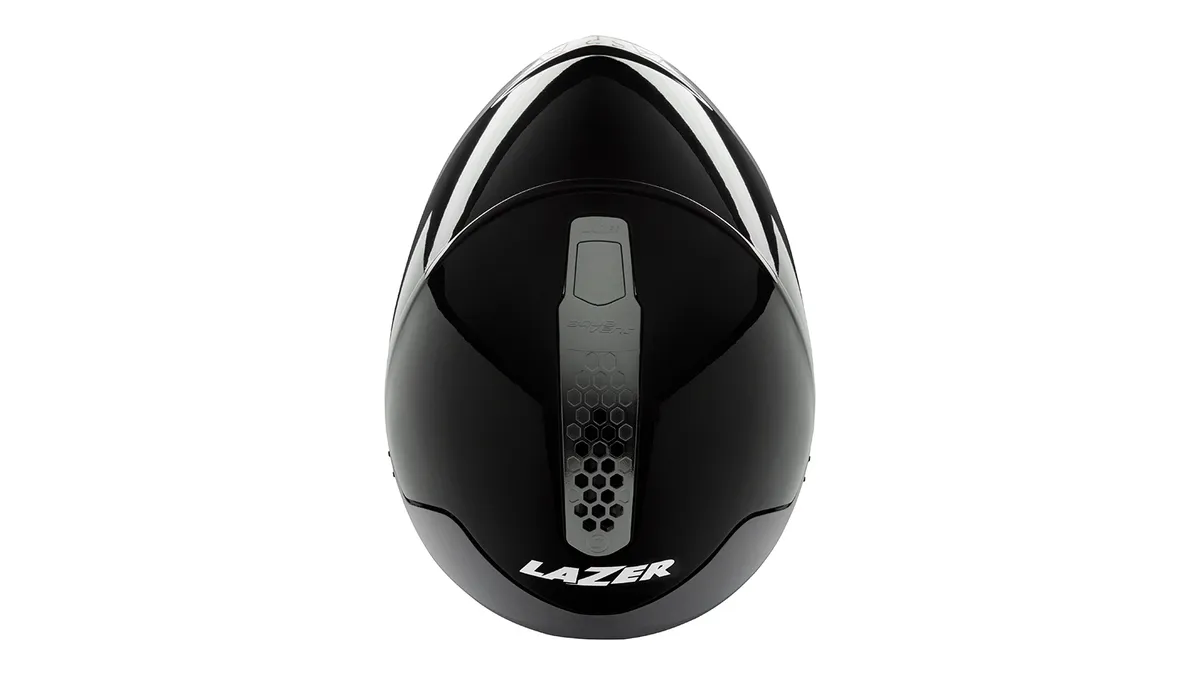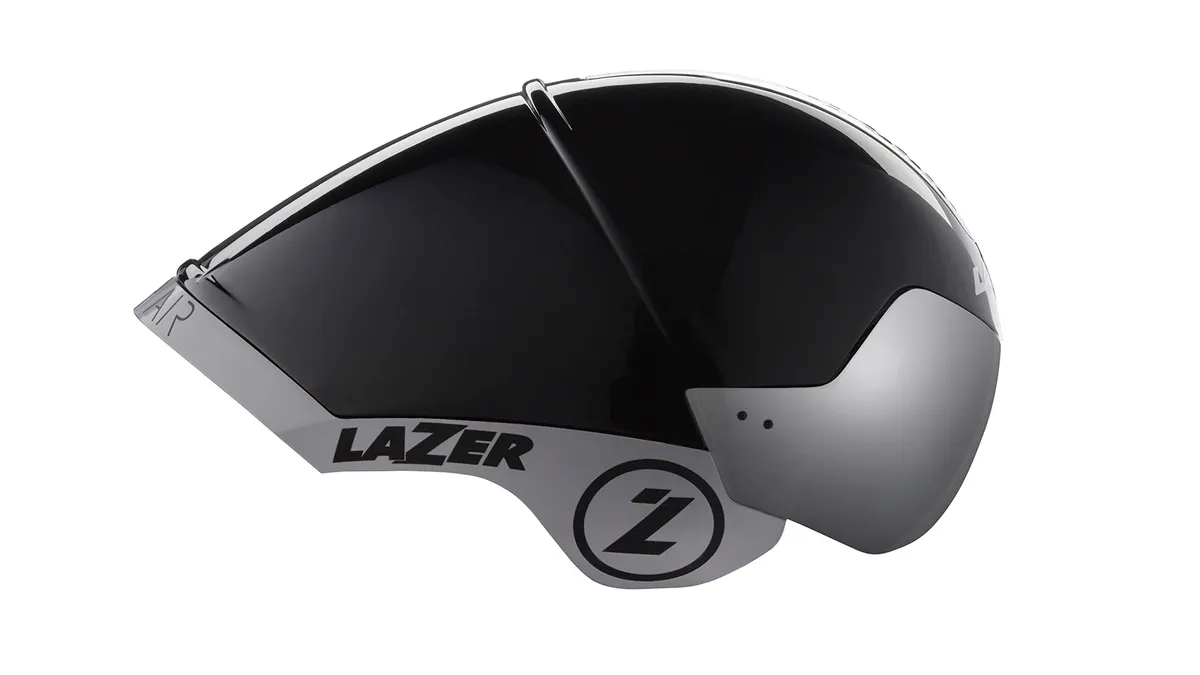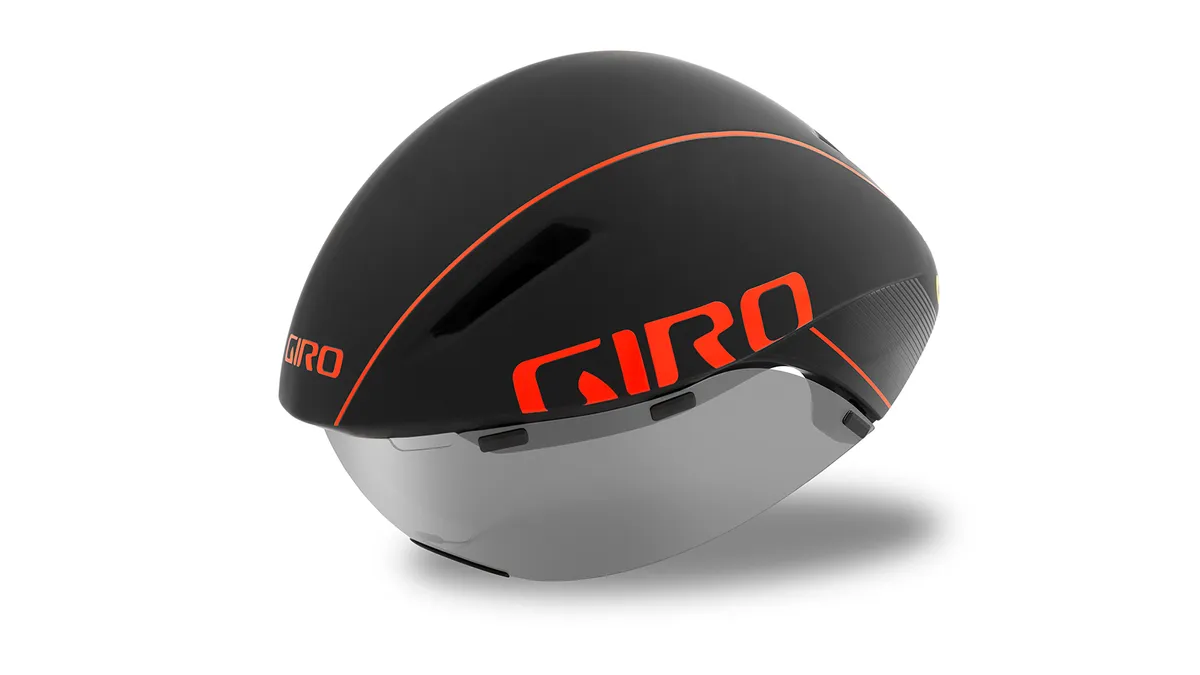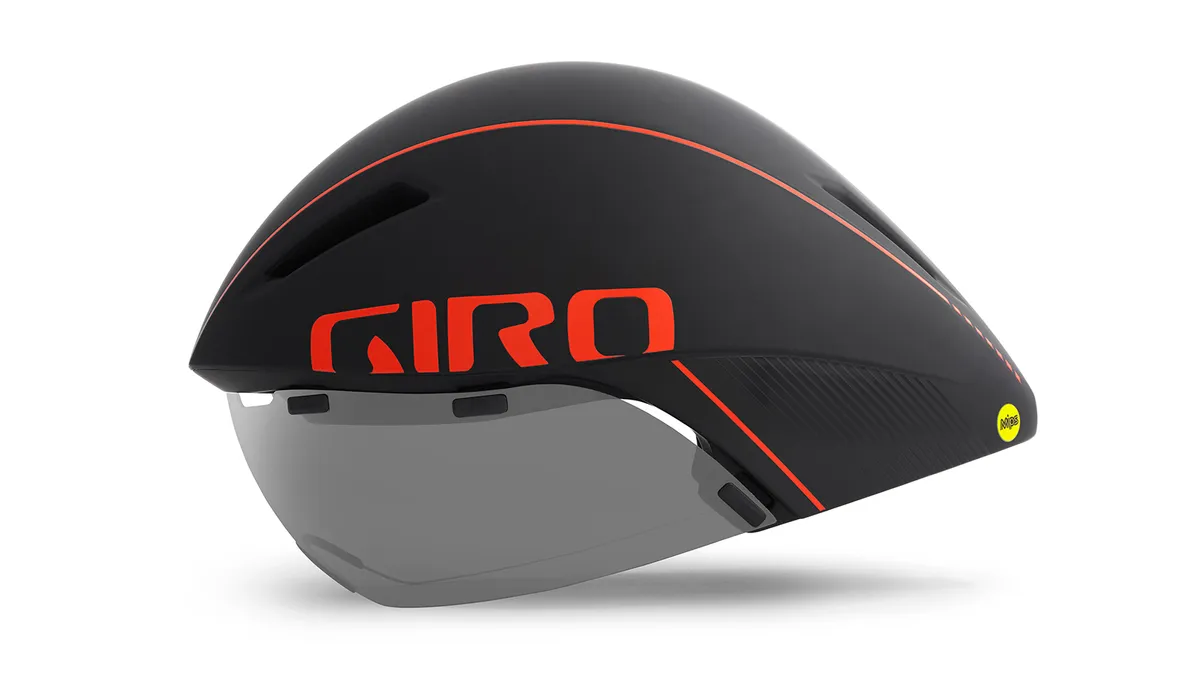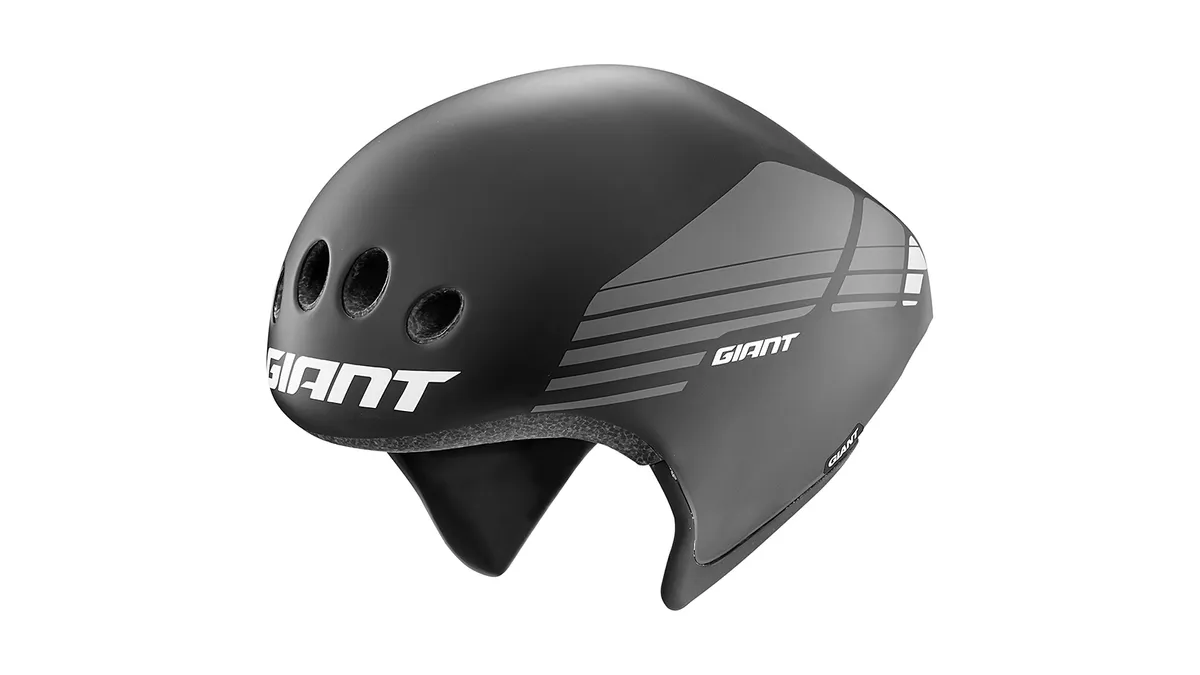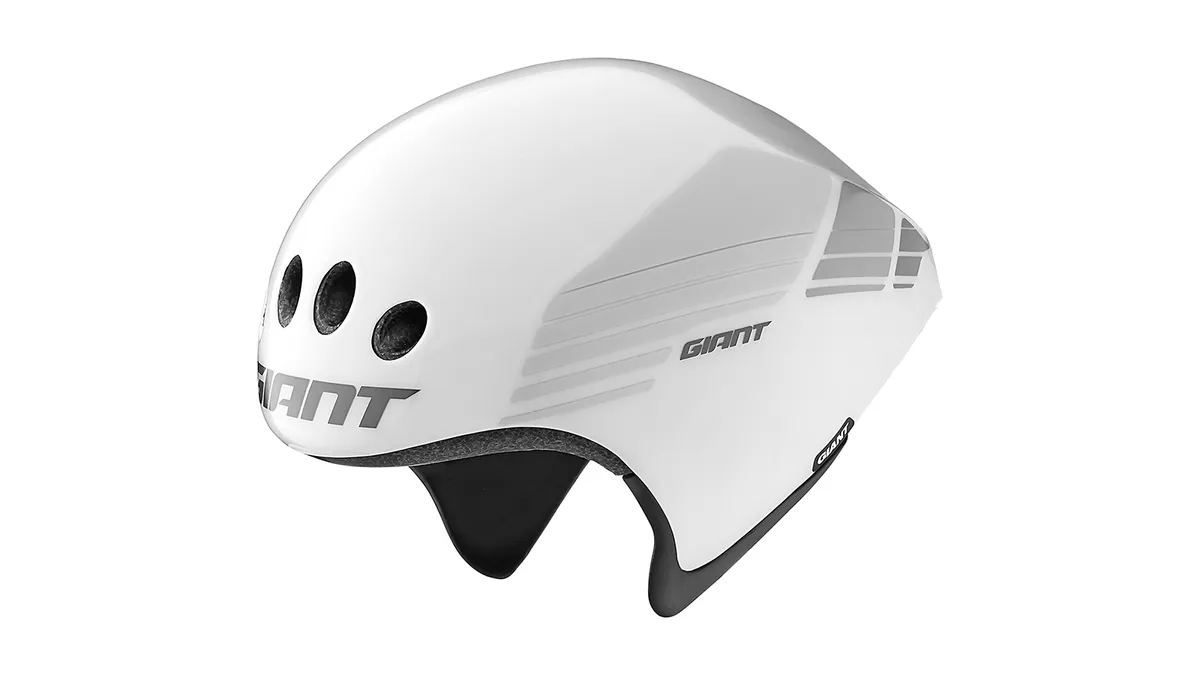A key component in any time-trial tester or triathlete’s kit is the helmet atop their head. It's the leading edge in the fight against aerodynamic drag.
- The ultimate Christmas gift guide for cyclists
- Best kids bikes for Christmas: a buyer's guide
- Chain Reaction Black Friday deals
Brands go to great lengths to test the aerodynamics of their helmets and calculate the relative advantages of each design, and the watts they may save. However, the truth is that it’s difficult to make recommendations about time-trial helmets because their performance is so individual.
So, instead, this is a look at how they fit, feel, and hold up to routine use. What are the shortcomings and strengths that may affect comfort and speed? What are the design elements that stand out?
Depending on the length of time trials or triathlons, your decision-making priorities will change. I used all the helmets here in a size medium and each helmet saw many hours of use during my preparations for an upcoming 12-hour time trial.
Each of them ran true to size, but some were snugger than others.
The best time trial helmets of 2018
POC Cerebel Raceday
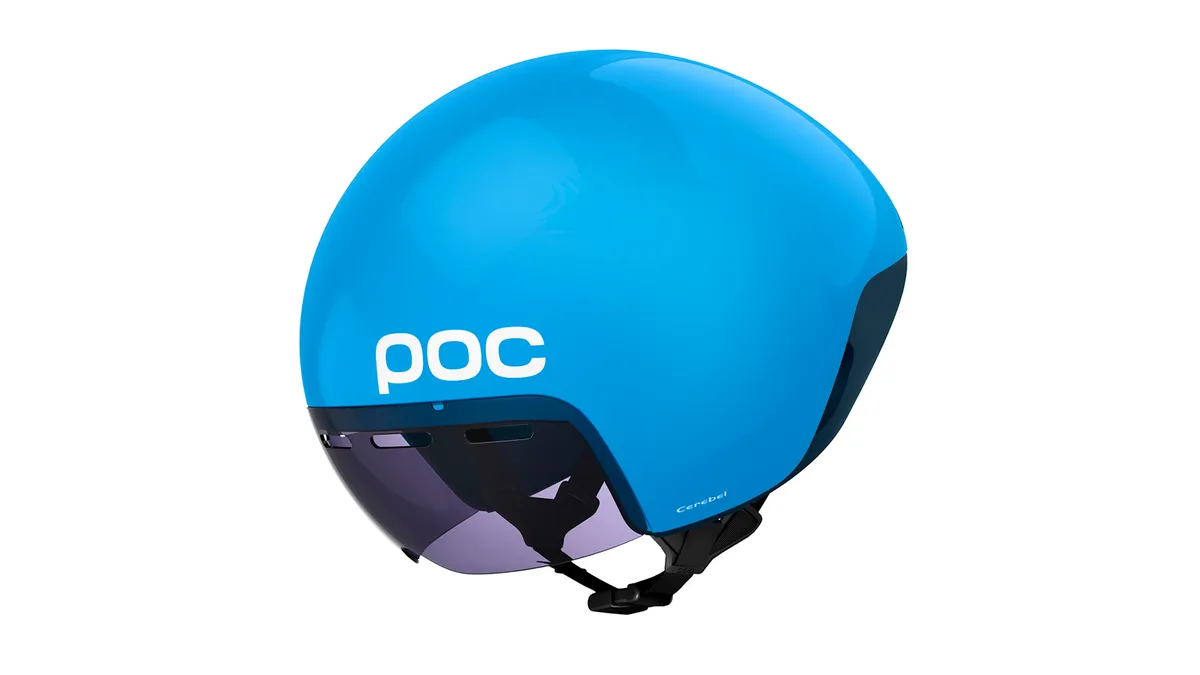
- Price: £330 / $350
- Weight: 396g
POC’s Cerebel is a huge departure from the company’s first go at a time-trial helmet, the Tempor. Not only is it much smaller, it's also derived from an entirely different design philosophy. The Cerebel is meant to be fast in a wide variety of positions for a wide spectrum of riders. Again, I can’t confirm these claims, but with its rounded, bobtail shape, it’s easy to understand them.The POC might be wonderfully small, but it's still comfortable with the shell standing off the ears nicely. Adjusting the rear dial mechanism is best done with the helmet off, but those with smaller hands may be able to reach inside the soft tail section to do so on the fly.
The POC offers a large field of vision, especially above the brow. Those riding with a super low position will like this, but anyone trying to get aero can appreciate an unobstructed view.
The ventilated visor and the gills at the side do a good job of moving air through the helmet. That said, depending on the tilt of your head, it’s easy to experience noise. When I dropped my head, looking down, it would whistle at me. While annoying at first, it came as a handy reminder to keep my head up, looking forward.
The magnetic attachment of the visor is nicely executed. For riders who like to squeeze into the smallest helmet possible, the POC makes it easy to take the visor off before putting the Cerebel on and just as simple to remove it before taking the helmet off.
The Cerebel arrives with two visors, one is nearly clear yellow, while the other has a darker tint for brighter conditions. According to POC’s website, the tint has been “developed together with Zeiss to enhance the contrast of the road surface, allowing the rider to spot any irregularities or obstacles in time”. While, at times, I wish the tint was darker, it does indeed do a good job of highlighting differences in road surface.
With its claimed aerodynamic robustness, the POC is certainly a contender for those who struggle to hold a static position, take on ultra distances, or for track athletes taking on sprint efforts.
It is a comfortable helmet with a great visor. At £330 / $350, the Cerebel is the most expensive helmet here, but it does have two visors and a semi-rigid carrying case, and is likely to be fast for a wide variety of athletes.
Specialized S-Works TT
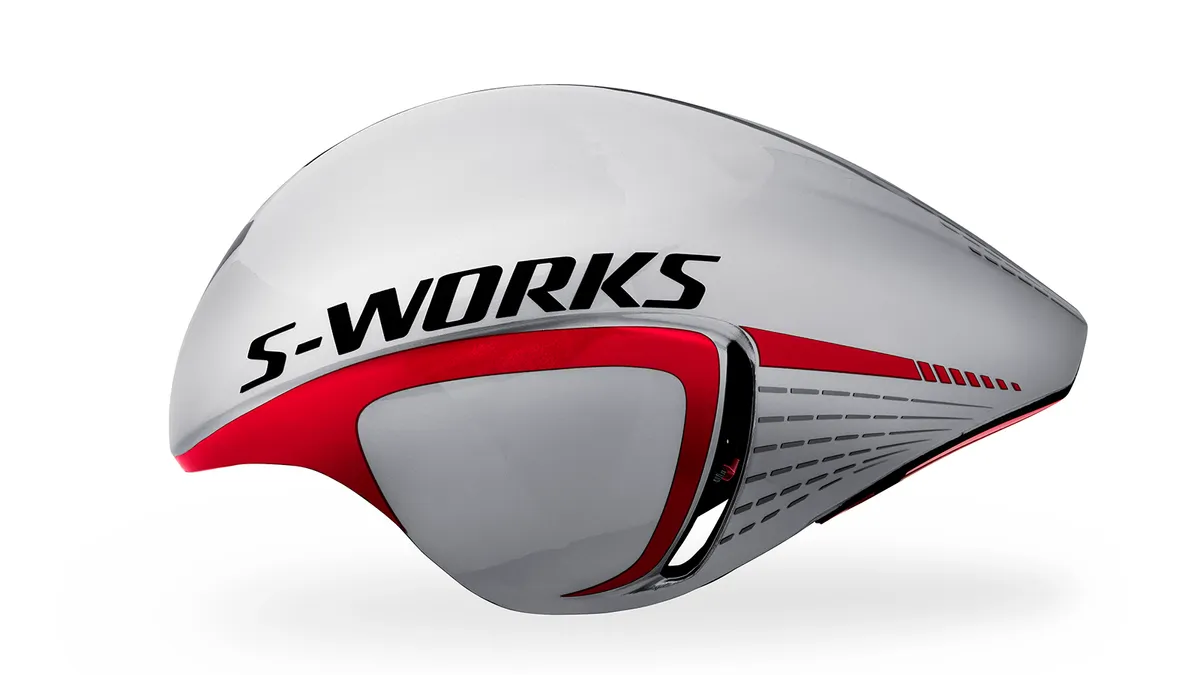
- Price: $300 / AU$450
- Weight: 463g
The Specialized is the longest helmet mentioned here, making it possibly the best for riders who are disciplined about their riding position. It’s important to keep the tail down on a longer helmet in order to make your shape as slippery as possible.Derived from Specialized’s previous S-Works McLaren TT helmet, the newer S-Works TT is updated with patented side 'gill' vents that increase airflow through the helmet. Having never tried the McLaren, I can’t comment on any improvement in cooling, but the S-Works TT is reasonably well-ventilated for a time-trial lid.The Specialized comes with a pair of great visors, one tinted for bright conditions, the other clear. The optics are crystal clear with no appreciable distortion.
The visor installs with a trio of plastic clips. This is secure to a point and I managed to eject a visor while riding, as I tried to rotate the helmet back on my head to get the tail down. Thankfully, you can also run the S-Works TT without the visor and use your own sunglasses as many Specialized sponsored athletes do.
The S-Works TT is comfortable even on longer rides despite essentially tying with the Giro as the heaviest in the round-up here. Perhaps the longer tail brings some of the weight rearward aiding in keeping the tail down and head up.
Like the POC and Giro, the Specialized comes with a zip closure, and semi-rigid storage case to keep your helmet and visors from getting dinged during transit.
The Specialized, with its long tail, is bound to be fast for riders who can concentrate on holding a fast head position. If that sounds like you, the S-Works TT is worth a try.
Giant Rivet TT
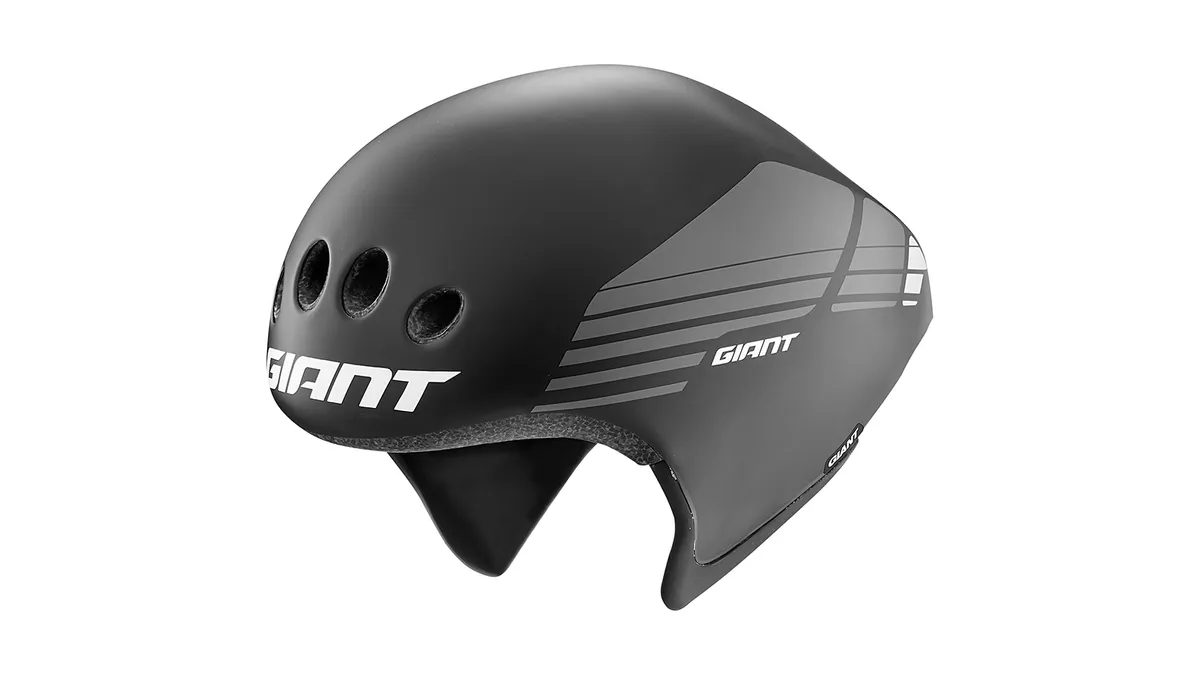
- Price: £180 / $229 / $230
- Weight: 426g
Perhaps the most straightforward of the helmets in this line-up, the Giant has a clear pedigree thanks to Tom Dumoulin, Ellen Van Dijk and their Sunweb teammates. There is no visor on offer and no shape-shifting tail section. But what you do get is a very fast helmet designed for a wide variety of rider positions.Giant is the best ventilated option here and so it was the one I reached for on hotter days. Much of this airflow has to be due to the lack of a visor. Ventilation is also aided by the four round vents at the front of the helmet, deep internal channels, and a large exit port at the rear of the helmet.The lack of visor does mean that you’ll need to check to see if your eyewear of choice fits inside the helmet. I wore a pair of Oakley EVZero Path sunglasses with the Rivet TT. Their slim ear stems and frameless design are great for riding in a low, time-trial position. By comparison, my Adidas Zonyk Pro glasses didn’t fit so nicely.
The Giant is fairly tight over the ears, likely a good thing in terms of aerodynamics, but can be a bit uncomfortable on longer rides. Personally, the Rivet TT would be great for short, hot time-trials or triathlon.
Giant’s Rivet TT is the least expensive helmet here at £180 / $229 / $230. But the next cheapest, the Giro, comes with a great storage case and uses a nice wraparound visor. Of course, it doesn’t ventilate as well as the Giant. It’s all a matter of your priorities.
If you prefer to run sunglasses in lieu of a visor and if staying cool is a constant struggle, the Rivet TT is the way to go.
Giro Aerohead MIPS
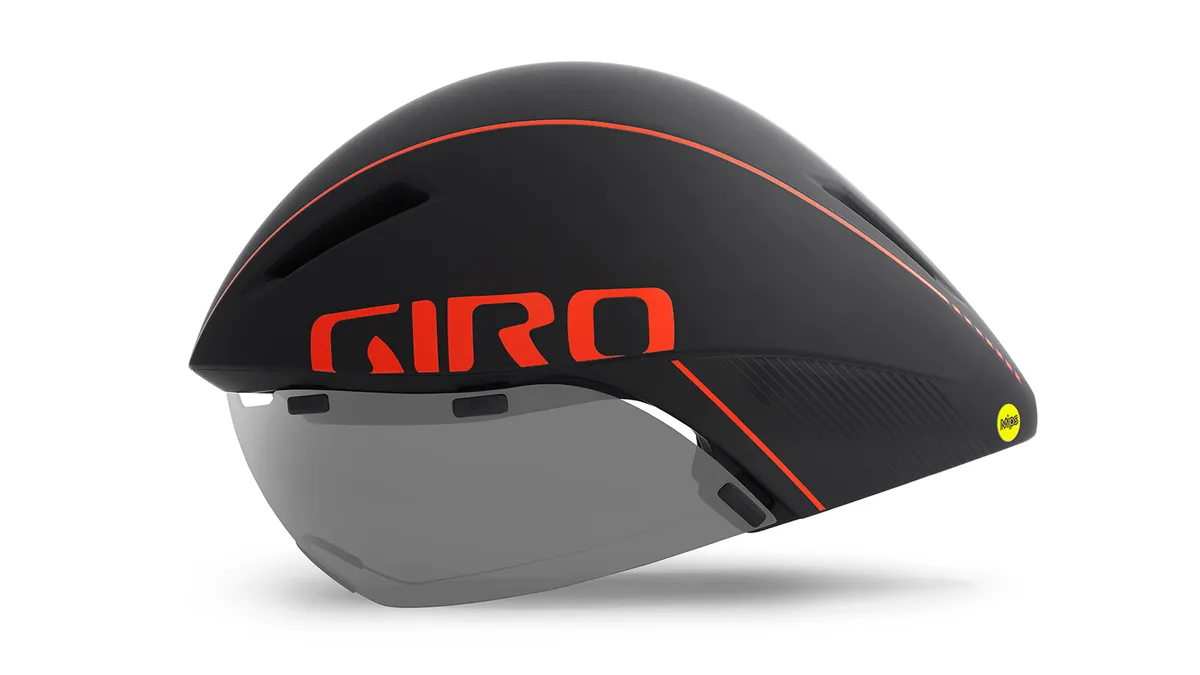
- Price: £260 / $250 / AU$380
- Weight: 460g
Giro’s Aerohead MIPS is unique in many ways. First of all, it's the only helmet here with a MIPS rotational impact liner. The Aerohead also has a forward-overhanging shape that Giro claims is fast over a spectrum of head positions. It certainly extends further over its wearer’s brow.Also unique is the wraparound, magnetic visor. With the visor off and stored conveniently atop the helmet using magnets, one’s ears are exposed. Installing the visor over the face is easy enough and can be performed with one hand.While fast, the Aerohead has its foibles. The visor’s optics are decent, but not as good as the POC or Specialized.
The Aerohead is within 2g of the Specialized, the heaviest helmet in this test. And with that forward overhang and abbreviated tail, it wants to pull your head down. Over a short race, this isn’t a problem, but roll along for a few hours and it can begin to wear on your neck.
Additionally, the Aerohead isn’t the coolest helmet in the lineup. The wraparound visor covers more of the face and this probably adds to the sensation of an already hot head.
But at £260 / $250 / AU$380, it's $50 less than the S-Works TT and $100 less than the Cerebel. Like them, it arrives with a semi-rigid, padded case, but only one visor. As such it’s a bargain for a super-slick helmet with a well-executed visor.
If the absolute lowest drag is your aim, Giro also offers the Aerohead Ultimate, a slightly smaller overall shape that doesn't prioritise ventilation but runs a premium £520 / $550 / AU$800 price tag.
Lazer Wasp Air Tri
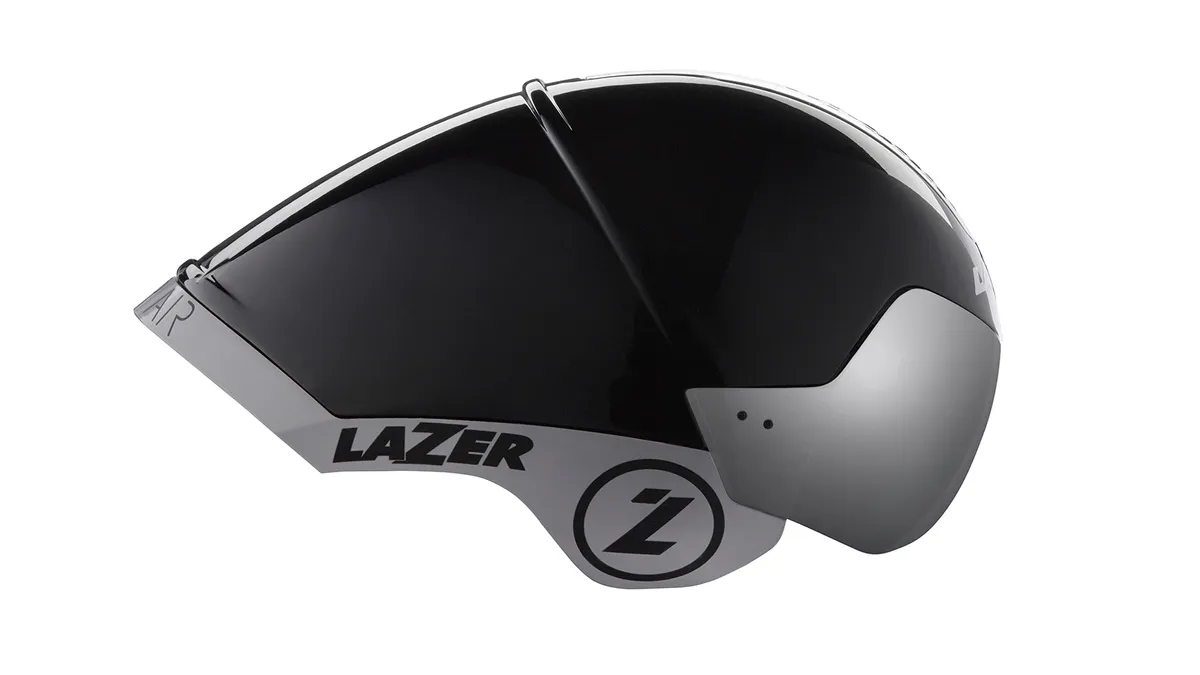
- Price: £250 / $310
- Weight: 443g
Lazer’s Wasp Air Tri is something of a shape shifter. While designed to be fast, it also puts an emphasis on ventilation. With an optional long tail and several different venting options, it's widely adaptable for changing conditions and different rider needs.
In addition to a vent at the front of the helmet, on top is a hatch that Lazer calls the Aquaport. It’s designed to allow a rider to pour water over their head during extended efforts in high temperatures. While the feature adds weight to the helmet, if you run hot, it’s probably worth its weight in gold.
The Wasp’s visor aids in ventilation as well. It can be, using different indents in the mounting hardware, pulled away from the helmet to increase ventilation and doing so works exceptionally well.
The difference between the visor closed and open can make or break an effort on a hot day. It may be slower aerodynamically, but if it keeps you from overheating you’re better off in the long, or short, run.
While I love the adjustability of the visor, the lens itself could use some help. The optics are not nearly as crisp as many of its rivals reviewed here. In particular, there are a few wavy spots near the nose cutout that could make looking down at your computer a bit off.
On the upside, the Wasp possibly offers some of the best situational awareness of any full-coverage time-trial helmet I’ve worn. It allows you to hear approaching traffic far better than most helmets that cover your ears.
Lazer also offers its accessory LifeBEAM heart-rate monitor that reads your pulse via helmet pads. A clever inclination sensor can be installed in the helmet as well. It helps remind the rider to keep the tail of the helmet low and against the back.
While this is something that can be worn during a race, it’s also a great training tool. As mentioned above, Lazer also offers an optional longer tail section for riders who like an elongated helmet profile.
Great for riders who race in a variety of conditions, the Wasp Air Tri lists at £250 / $310. Additional accessories will raise that price tag, but with its versatility and the included helmet bag, the Lazer could be considered a bargain.
Updated 21 November 2018
